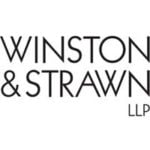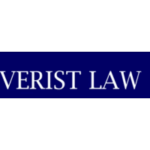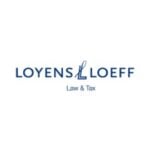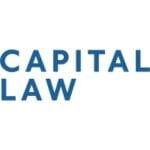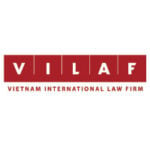-
Please briefly describe the regulatory framework and landscape of both equity and debt capital market in your jurisdiction, including the major regimes, regulators and authorities.
Both the equity capital markets and the debt capital markets in the United States are governed by the same basic regulatory framework and landscape. That framework includes laws, rules, and regulations at the federal level. In addition, each of the 50 states and certain other jurisdictions within the United States have separate sets of securities laws (so-called “blue sky laws”). While federal law preempts some categories of state securities regulation, certain areas – such as fraud – remain within the purview of state securities regulators.
At the federal level, the two principal statutes are the Securities Act of 1933, as amended (the “Securities Act”), and the Securities Exchange Act of 1934, as amended (the “Exchange Act”). Each offer and sale of securities (including equity and debt securities) must be registered under the Securities Act or must qualify for an exemption from registration. Importantly, the federal securities laws are transaction-based, not securities-based; subsequent offers and sales of the same securities must be registered or exempt. The Exchange Act regulates trading, disclosure, market participants, exchanges, regulatory enforcement, and other related matters, such as public reporting, proxy solicitations, tender offers, disclosure of ownership and trading of securities by company affiliates and exchange listing standards. Each of the Securities Act and the Exchange Act has generated numerous different, complex, and separate areas of specialty regulation and governance.
In addition, other federal securities statutes address key areas, including:
- the Trust Indenture Act of 1939 regulates debt securities registered under the Securities Act;
- the Investment Company Act of 1940 regulates investment companies, such as mutual funds;
- the Investment Advisers Act of 1940 regulates investment advisers;
- the Sarbanes-Oxley Act of 2002 (“Sarbanes-Oxley”) regulates corporate responsibility and financial disclosures; and
- the Dodd-Frank Wall Street Reform and Consumer Protection Act of 2010 (“Dodd-Frank”) addresses consumer protection, trading restrictions and corporate governance.
Listed public companies are also regulated by the securities exchanges on which they are listed, which is typically the New York Stock Exchange (the “NYSE”) or The Nasdaq Stock Market (“Nasdaq”), each of which has its own rules and regulations (subject to SEC approval) for initial and continued listing.
The U.S Securities and Exchange Commission (“SEC”) is the primary regulator overseeing the equity and debt capital markets. The SEC has a three-part mission to facilitate capital formation, protect investors, and maintain fair, orderly, and efficient markets. Market participants under the SEC’s oversight include approximately 8,300 reporting companies, 4,000 publicly traded companies, 13,000 registered funds, 15,400 investment advisers, 3,400 broker-dealers, 24 national securities exchanges, 103 alternative trading systems, 10 credit rating agencies, and six active registered clearing agencies (according to the SEC’s Fiscal Year 2025 Congressional Budget Justification). The SEC also oversees other regulatory bodies, including the Financial Industry Regulatory Authority (FINRA), the Municipal Securities Rulemaking Board, the Securities Investor Protection Corporation, the Public Company Accounting Oversight Board (PCAOB), and the Financial Accounting Standards Board (FASB).
Derivatives and commodities markets are regulated by the Commodity Futures Trading Commission.
-
Please briefly describe the common exemptions for securities offerings without prospectus and/or regulatory registration in your market.
A principal question for securities offerings in the United States is whether such offering will require registration with the SEC under the Securities Act, or whether the offering is exempt from registration.
Exemptions from registration include:
- Private placements – Section 4(a)(2) of the Securities Act and Regulation D
- Private resales – Section 4(a)(1) of the Securities Act, and Rule 144
- Offerings to qualified institutional buyers (“QIBs”) – Rule 144A
- Offshore offerings – Regulation S
- Issuances to employees, consultants, and advisors not for capital-raising – Rule 701
- Chapter 11 bankruptcy – Section 1145 of the Bankruptcy Code
While the SEC has established a variety of exemptions from registration, the exemption most commonly used by issuers in equity offerings are Section 4(a)(2) and Rule 506(b) under Regulation D, and the exemptions most commonly used in debt offerings are Rule 144A and Regulation S.
Section 4(a)(2) and Regulation D
Section 4(a)(2) of the Securities Act provides a general exemption from registration for private placements, i.e., any transaction by an issuer not involving a public offering. Any company, public or private, can use Section 4(a)(2). There is no limit on the amount of securities that may be sold in reliance on the Section 4(a)(2) exemption. However, there are investor limitations: only sophisticated investors who can fend for themselves, or investors with a pre-existing substantive relationship with the issuer, can invest in a Section 4(a)(2) offering. State “blue sky” securities regulation applies to securities sold under Section 4(a)(2) unless pre-empted by federal law.
Regulation D is a safe harbor which provides specific guidelines for conducting private placements under Section 4(a)(2). State securities regulation does not apply when securities sold in compliance with the Regulation D safe harbor. Regulation D has several sub-parts that apply to different types of private placements (including private placements prohibiting general solicitation, private placements permitting general solicitation, and limited offerings). The most common of these is Rule 506(b). Companies conducting an offering under Rule 506(b) can raise an unlimited amount of money and can sell securities to an unlimited number of accredited investors. A 506(b) offering cannot use general solicitation or advertising to market the securities, and the securities cannot be sold to more than 35 non-accredited investors. All of the sub-parts of Regulation D are subject to “bad-actor” disqualification, meaning that if any officer, director, or 20% or larger shareholder of the issuer, or any promoter or underwriter of the offering, has committed certain bad acts (such as fraud), then the company cannot make use of the Regulation D safe harbor.
Section 4(a)(2) and Regulation D are transactional exemptions, meaning that the securities themselves are not exempt, the offering is. A separate registration or exemption would be required for a resale of the securities by the purchaser.
Section 4(a)(1)
Section 4(a)(1) exempts transactions by any person other than an issuer, underwriter, or dealer from the registration requirements of the Securities Act. The application of this exemption is more limited than it may appear because the term “underwriter” is defined very broadly under the Securities Act, and includes any person who has purchased any security with a view to distribution of the security as well as any person who participates in the distribution of the security.
Rule 144
Rule 144 provides a safe harbor from registration under Section 4(a)(1) for a shareholder to publicly sell “restricted securities” and “control securities” without being deemed to be an underwriter. Restricted securities are securities acquired directly or indirectly from the issuer or from an affiliate o the issuer, in a transaction not involving a public offering. Control securities are securities owned by a person who is an affiliate of the issuer. The requirements under Rule 144 vary based on whether the selling shareholder is an affiliate or not. Non-affiliates must have held the securities for a prescribed holding period (generally 6 months or 1 year) and, depending on the holding period that applies and whether the issuer is a former shell company, the issuer must have filed all required reports under the Exchange Act for a period of 12 months prior to the sale. Affiliates must satisfy additional requirements, including volume limitations and limitations on the manner in which the securities are sold, and must file notices with the SEC if sales exceed certain limits.
Rule 144A
Rule 144A under the Securities Act is a safe harbor from registration for private resales of securities to QIBs by a person other than the issuer of the securities. Reoffers and resales to QIBs in compliance with Rule 144A are not distributions and therefore the sellers are not underwriters of the securities (even though the initial purchasers buy securities from the issuer with a view to immediate resale, which would normally be considered a distribution). As a result, these reoffers and resales are exempt from registration under Section 4(a)(1).
QIBs are, generally, large institutional investors that own at least $100 million in investible assets. The exemption is often used by placement agents or other broker-dealers to re-sell debt or equity securities that were initially purchased from the issuer in a private placement under Section 4(a)(2). Securities sold under Rule 144A are restricted securities and cannot be freely resold to the public without registration or an exemption.
Regulation S
The Securities Act does not apply to offerings that are reasonably designed to “come to rest” outside of the United States. Regulation S of the Securities Act is a safe harbor for offers and sales made outside of the United States which, if made in compliance with Regulation S, will not be subject to Securities Act registration. Investors must be outside the United States or the transaction must be executed on a non-United States exchange with no “directed selling efforts” made in the United States. There are three tiers of offerings under Regulation S depending on the type of issuer and security with varying offering and resale restrictions intended to address the risk such securities flow back into the United States.
Rule 701
Rule 701 under the Securities Act exempts certain issuances of securities made to compensate employees, consultants, and advisors. This exemption is not available to companies that are required to file reports under the Exchange Act. A private company may sell up to the greater of $1 million of securities or an amount equal to 15% of the issuer’s total assets or 15% of the outstanding securities of the same class. If an issuer sells more than $10 million of securities in a 12-month period, it is required to provide certain financial and other disclosure to the persons that received securities in that period. Securities issued under Rule 701 are “restricted securities” and may not be freely traded unless the securities are registered, or the holders can rely on an exemption.
Section 1145
Section 1145 of the Bankruptcy Code exempts from registration securities offered and sold in exchange for claims, interests, or administrative expenses in connection with a Chapter 11 bankruptcy plan. Further, securities offered and sold under Section 1145 are deemed to be sold in a “public offering”, which means that they are freely tradable by non-affiliates of the debtor.
-
Please describe the insider trading regulations and describe what a public company would generally do to prevent any violation of such regulations.
U.S. federal securities law prohibits any person from trading in a public company’s securities in breach of a fiduciary duty or other relationship of trust and confidence while in possession of “material” and “nonpublic” information (“MNPI”). Material information is information that would be considered important by a reasonable investor in making an investment decision. The SEC and U.S. courts have not adopted a bright-line test for materiality, but examples of potentially material information include earnings estimates or results, significant merger and acquisition proposals or agreements, significant new products or discoveries or significant developments regarding customers or suppliers, changes in control or in management, changes in auditors, major litigation, securities offerings, dividends or stock splits, and bankruptcies. Nonpublic information is information that a company has not widely disseminated to the public. Courts in the U.S. will generally consider information to be widely disseminated if companies have disclosed it in, for example, daily newspapers or widely circulated public disclosure documents, such as prospectuses, quarterly and annual reports, and proxy statements. Additionally, a sufficient period of time must pass for the information to be absorbed by the market to be considered public. Nonpublic information may include corporate developments not yet announced, information available to analysts, brokers or institutional investors and undisclosed facts that confirm or disprove widely circulated rumors.
“Insiders” include every person or entity that, by virtue of a fiduciary relationship with a company, has knowledge of or access to MNPI. Insiders typically stand in a position of trust and confidence to the company and its shareholders (i.e., officer, director, controlling shareholder, or employee) and owe a duty to use information entrusted to them solely for the company’s purposes and not for their personal benefit. This duty gives rise to an “abstain-or-disclose” doctrine, by which an insider is required to either abstain from trading (or “tipping” others) while aware of MNPI or ensure that information is fully disclosed and disseminated to the market before trading.
The consequences of an insider trading violation can be severe. There are significant criminal and civil penalties in the U.S. for persons who trade on MNPI.
To reduce the risk of insider trading, companies typically adopt insider trading policies. These policies are often more stringent than applicable law. For example, these policies often include:
- prescribed periodic trading “blackouts” imposed by a company on insiders prior to the public disclosure by the company of all MNPI, which periodic blackouts normally precede periodic press releases relating to results of operations and financial condition for a preceding operating period;
- event-driven ad hocblackouts imposed by management in the event of the occurrence of MNPI, which blackout may be imposed on all or a portion of a company’s insiders, depending on the access to the MNPI;
- pre-clearance procedures for directors and officers to trade in the company’s securities; and
- guidelines for adopting safe-harbor trading plans by individual directors and officers that, if properly structured, create a presumption that trades were not based on MNPI.
-
What are the key remedies available to shareholders of public companies / debt securities holders in your market?
Both the Securities Act and the Exchange Act provide basic liabilities upon which an investor may bring a legal action. The remedies created under other federal securities laws generally are based in substance on the provisions of these two statutes.
Securities Act Provisions
Section 11 of the Securities Act creates a private right of action for purchasers of securities based on the contents of a registration statement filed with the SEC in connection with a public (non-exempt) offering. If a registration statement, at the time it became effective, contained an untrue statement of a material fact or omitted to state a material fact required to be stated therein or necessary to make the statements therein not misleading, any person acquiring securities by means of the registration statement (unless it is proved that at the time of such acquisition he knew of such material misstatement or omission) may sue (1) every person who signed the registration statement (i.e., the issuer and its officers and directors), (2) every person who was a director of the issuer at the time the registration statement was filed, (3) every person who, with his or her consent, is named as a director or director nominee in the registration statement, (4) every accountant, engineer, or appraiser who is named as having prepared or certified any part of the registration statement, and (5) every underwriter of the securities.
A Section 11 plaintiff does not need to establish a defendant’s scienter (i.e., an intention or knowledge of wrongdoing) or even negligence. Further, a plaintiff is not required to show specific reliance on the applicable statements in the registration statement to recover under Section 11. Section 11 of the Securities Act was designed to ensure compliance with the disclosure provisions of the Securities Act by imposing a stringent standard of liability on the parties who play a direct role in a registered offering.
An issuer has almost no defenses under Section 11 and is strictly liable for material misstatements and omissions in registration statements. Other defendants have a variety of defenses under Section 11, including a due diligence defense, with the defendant bearing the burden of proof.
Generally, the amount of damages in a Section 11 claim is the decrease in the value of the applicable securities, which is calculated as the difference between the price at which the securities were bought (capped at the public offering price) and the price at which the securities were sold, if the securities were sold before suit was filed, or the price as of the date the suit was filed, if the securities are still held as of that date, and a plaintiff need not show that such decrease was “caused” by a material misstatement or omission in the registration statement. There is no cap on the amount of damages that a plaintiff can recover, except in the case of underwriter defendants. An underwriter’s liability under Section 11 is caped at the aggregate public offering price of the securities underwritten by the underwriter. Actions under Section 11 must be brought within one year from the time of discovery of the untrue statement or omission, or from the time such discovery should have been made by the exercise of reasonable diligence, and in no case more than three years after the security was first offered to the public.
Section 12(a)(1) of the Securities Act provides that any person who offers or sells a security required to be registered under the Securities Act that is not so registered is liable to the purchaser of that security. Section 12(a)(2) of the Securities Act provides that any person who by use of any means of interstate commerce offers or sells a security on the basis of a materially false or misleading prospectus or materially false or misleading oral statements is liable to the person purchasing from him, unless he can show that he did not know, and could not in the exercise of reasonable care have known, of the falsehood or omission. With certain exceptions, Section 12 operates in much the same manner as Section 11 – a plaintiff is not required to show intent, reliance, or causation.
The basic difference between Section 11 and Section 12 is that the former holds liable the persons responsible for a false or misleading registration statement for damages to any and all purchasers regardless of who the seller was, whereas Section 12 only holds liable the seller. Further, Section 12 allows the purchaser to either rescind the purchase or to get damages from the seller if the securities are no longer held.
Exchange Act Provisions
Section 10(b) of the Exchange Act and Rule 10b-5 thereunder prohibit the use of manipulative or deceptive devices in securities transactions. More specifically, Rule 10b-5 prohibits the use of any means of interstate commerce to employ any device, scheme, or artifice to defraud, make material misstatements or omissions, or engage in any course of business that operates as a fraud against any person, in connection with the purchase or sale of any security. In general, to prevail on a Rule 10b-5 claim, a plaintiff must prove that the defendant made a false statement or an omission of material fact with scienter in connection with the purchase or sale of a security, upon which the plaintiff reasonably relied, and which proximately caused the plaintiff’s harm. Rule 10b-5 can be enforced by the SEC in injunctive and civil penalty actions, including actions by the United States Department of Justice in imposing criminal liability for willful violations of the Exchange Act. In addition, courts have also allowed a private right of action under Rule 10b-5. Rule 10b-5 liability may be imposed on any person who made the statement alleged to be materially false or misleading and a defendant need not have purchased or sold securities; a defendant’s conduct must only have occurred “in connection with” purchases or sales of securities. Rule 10b-5 is a general antifraud rule broadly prohibiting a wide range of conduct, including fraud between purchasers and sellers, false or misleading statements of material fact by insiders or others that affect a security’s trading price, or insider trading on MNPI as discussed above.
Control Person Liability
Under Section 15 of the Securities Act, any person who controls a person liable under Section 11 or Section 12 of the Securities Act is jointly and severally liable. The controlling person can escape liability if they had no knowledge of, or no reasonable grounds to believe, the facts by which the liability is alleged to exist. Similarly, Section 20 of the Exchange Act provides that controlling persons are jointly and severally liable for any violation of the Exchange Act committed by the person that is controlled. The controlling person can escape Section 20 liability if they acted in good faith and did not directly or indirectly induce or cause the violation.
Due Diligence Defense
Underwriters and other offering participants (other than the issuer) can establish an affirmative defense to disclosure liabilities under Sections 11 and 12(a)(2) of the Securities Act by performing due diligence in connection with the securities offering.
The requirements of the due diligence defense under Sections 11 and 12 vary depending on whether the defendant is an “expert” (which includes any person whose profession gives authority to their statements, such as auditors) and whether the portion of the registration statement is “expertized”. Nonexpert defendants who are sued regarding an expertized portion of a registration statement may defend themselves by pleading ignorance, that is, showing that they had no reasonable grounds to believe, and did not believe, that the expertized portion of the registration statement contained a material misstatement or omission. More is required of experts and of nonexperts when a nonexpertized portion of the registration statement is the subject of the complaint. In those cases, the defendant must show that they had, after reasonable investigation, reasonable ground to believe, and they did believe, that the statements in the registration statement were true and there was no material omission. Registration participants, including underwriters, attempt to establish a due diligence defense by seeking facts to support the statements made in the registration statement (i.e., by conducting a fact circle-up), asking questions of management and other experts to confirm that there is no material omission in the registration statement, and seeking officer certificates from the issuer’s officers attesting to the truth of certain statements in the registration statements, comfort letters from auditors, and negative assurance letters from counsel.
Due diligence can also help defend against an Exchange Act 10(b) claim, as the defendant’s due diligence would be relevant to the analysis of whether such person engaged in the intentional or reckless conduct required to prove a Rule 10b-5 violation.
General
The foregoing statutory remedies are in addition to the various contractual remedies that would be available in a securities offering, including under applicable underwriting agreements (in the case of an underwritten public offerings), purchase agreements (in the case of a Rule 144A offering), specific other securities purchase agreements (in the case of private placements) and other debt and collateral documentation and the rights and remedies thereunder available to debt holders in the event of defaults and bankruptcy proceedings.
-
Please describe the expected outlook in fund raising activities (equity and debt) in your market in 2025.
2025 IPO Performance
US IPOs showed steady gains in 2024 as inflation stabilized and interest rates edged downward in the fourth quarter, raising investor hopes for a hot IPO market in 2025. US IPO markets entered 2025 well positioned for a strong year due to stabilizing interest rates, market expectations of a business-friendly US administration and the pressing need for private equity firms to exit portfolio companies.
In January 2025, 28 companies raised approximately $5.1 billion on the IPO market. Of these, 8 companies were special purpose acquisition companies (“SPACs”) and they raised approximately $1.1 billion. The IPO market then slowed a bit in February, when 28 companies raised approximately $4.7 billion (of which 8 were SPACs raising approximately $1.7 billion) and in March, 23 companies raised approximately $2.5 billion (of which 4 were SPACs raising approximately $561 million).
President Trump’s “Liberation Day” tariffs caused many companies to hit pause on their IPOs. Uncertainty regarding US tariffs and retaliatory actions by other nations and continuing market volatility have weighed on offerings. In April, U.S. IPOs were at their lowest level so far in 2025, with 32 companies raising approximately $4.5 billion. Of these, 13 companies were SPACs raising approximately $2.9 billion.
After the dip in April, things are starting to look up for the IPO market. In May, 32 companies raised approximately $6.6 billion (of which 20 were SPACs and they raised approximately $4.5 billion), and in June, 28 companies have raised approximately $6.7 billion (of which 12 were SPACs raising approximately $2.4 billion).
Crypto is trending
Circle Internet Group, Inc., a cryptocurrency company, completed a $459 billion IPO in June 2025. Circle’s IPO follows President Trump’s comments in March 2025 that he wants to make America the “Bitcoin superpower of the world and the crypto capital of the planet”.
There have been 4 crypto IPOs in the last 7 months. Given President Trump’s statements, the SEC dismissing many suits against crypto companies, and moves towards stablecoin legislation to reduce uncertainty, we can expect to see more cryptocurrency companies come to market in the near term.
Resurgence of SPAC IPOs
SPACs have started to make a comeback. The SPAC market boomed in 2021 but subsequently fell sharply because of mixed performance and the impact of SEC regulation.
SPAC volumes are unlikely to reach the peak levels observed prior to the increasing interest rate cycles, but with a smaller, more select group of SPACs coming to the market, led by serial sponsors, activity levels are poised to improve. In 2025, through June 30, there have been 65 SPAC IPOs (compared to only 16 at this point last year).
Meanwhile, the de-SPAC market (where companies obtain a public listing through a business combination deal with a SPAC rather than through a direct IPO) has also proved to be an appealing route to capital formation for companies. De-SPAC deals provide a longer and more flexible public marketing period for price discovery, can be structured to include earn-outs to bridge valuation gaps, and can be structured to provide capital certainty through a private investment in public equity (“PIPE”) or non-redemption agreements, which are some of the attributes that have been proven to be attractive through recent macroeconomic uncertainty.
The SPAC resurgence also ties into the crypto industry, as some recent SPAC IPOs are specifically seeking crypto companies and SPACs are exploring investing trust capital in cryptocurrencies.
-
What are the essential requirements for listing a company in the main stock exchange(s) in your market? Please describe the simplified regime (if any) for company seeking a dual-listing in your market.
The two principal exchanges for listing in the United States are the NYSE and Nasdaq.
Before a company’s stock can begin trading on an exchange, the company must meet certain minimum financial and non-financial requirements, or “initial listing standards.” Initial listing standards generally include a company’s public float, total market value and stock price, and the number of publicly traded securities and shareholders of the company. For initial listing, the company also must comply with certain corporate governance requirements, including director independence and the establishment and composition of board committees. Companies that are foreign private issuers (“FPIs”) may take advantage of exemptions from some of the corporate governance requirements and instead follow their home country’s practices for corporate governance. Once listed on an exchange, a company must continue to meet various financial and non-financial requirements, or “continued listing standards.” For continued listing, the financial and liquidity requirements are less stringent than the requirements for initial listing. If a company fails to meet these continued listing standards, the exchange may remove or “delist” the company’s stock from the exchange.
A principal consideration behind the listing standards is to ensure sufficient size and volume to permit a minimum amount of liquidity and efficient pricing of the securities.
For dual listing on the NYSE or Nasdaq and a company’s home stock market, the company generally must meet the same listing requirements as for an initial listing on the NYSE or Nasdaq, in addition to any specific requirements of their home stock exchange.
Canadian public companies seeking to gain access to the US capital markets can use a simplified regime, called the Multi-jurisdictional Disclosure System (“MJDS”). The MJDS allows Canadian issuers to use their Canadian disclosure documents to meet public reporting obligations in the United States, rather than U.S.-style Exchange Act periodic reports (subject to complying with certain additional corporate governance and disclosure requirements mandated by Sarbanes-Oxley and Dodd-Frank). Additionally, a Canadian issuer conducting a public offering in the U.S. could file a registration statement that includes a prospectus prepared in accordance with Canadian form and content requirements, with an MJDS registration statement “wrapper” that includes certain required legends, and that filing would generally not be reviewed by the SEC. Canadian disclosure regime is less rigorous than U.S. disclosure regime – for example, U.S. requirements governing financial statement presentation and disclosure, management’s discussion and analysis of financial statements, risk factor disclosure, executive compensation disclosure, and other requirements do not apply to a Canadian prospectus.
On June 4, 2025, the SEC published a concept release soliciting public comment on whether the accommodations afforded to FPIs should continue to apply to the foreign issuers currently captured in the definition of “foreign private issuer”, or whether the definition should be amended or the regime altered. Among other things, the concept release seeks public input on updates to FPI eligibility criteria, adding a foreign trading volume requirement for FPI status, adding a requirement that the FPI be listed on a major foreign exchange, incorporating an SEC assessment of foreign regulation applicable to the FPI, establishing new mutual recognition systems akin to the MJDS, or adding an international cooperation arrangement requirement. The public comment period will remain open for 90 days. The issuance of the concept release does not necessarily mean that the SEC will ultimately propose new rules. If the SEC were to move forward with rulemaking, it would publish a rule proposal setting forth proposed modifications to the existing FPI rules and would solicit public comment on the proposal. Following the comment period and after considering the comments received, the SEC commissioners would vote on the proposed rule and, if the rule is approved, it would be adopted thereafter.
-
Are weighted voting rights in listed companies allowed in your market? What special rights are allowed to be reserved (if any) to certain shareholders after a company goes public?
Dual or super voting capital arrangements are permitted for U.S.-listed companies, subject to significant limitations. These arrangements have implications and limitations under both federal securities law and related exchange rules as well as applicable state (e.g., Delaware) law.
Once a company is listed on a stock exchange, it cannot disparately reduce or restrict the voting rights of existing shareholders of publicly traded common stock. For example, listed companies cannot adopt time-phased voting plans or capped voting rights plans, or issue super-voting stock or stock with voting rights less than the per share voting rights of the existing common stock through an exchange offer.
Companies that have a super-voting share structure in place prior to listing on Nasdaq or NYSE generally can maintain that structure. However, it is common for super-voting structures to include a sunset (often from three to five years and up to seven years) on the duration of the super voting shares to ensure they do not survive forever. In addition, the proxy advisory firms Institutional Shareholder Services (“ISS”) and Glass Lewis & Co. (“Glass Lewis”) negatively view companies with unequal voting rights and multiclass structures as not in the best interests of outstanding shareholders. ISS generally will recommend withholding votes or voting against directors individually, committee members or the entire board, while Glass Lewis generally recommends voting against the chair of the governance committee, when a company employs a capital structure with unequal voting rights.
-
Is listing of SPAC allowed in your market? If so, please briefly describe the relevant regulations for SPAC listing.
SPACs are well accepted in the United States. A SPAC is a publicly traded shell company (without any operating business) formed and managed by a sponsor for the purpose of merging with or acquiring one or more unidentified private operating companies (i.e., a “de-SPAC transaction”) within a specified time frame. If a SPAC does not complete a de-SPAC transaction within the time frame set in its constitutional documents, the SPAC must liquidate and dissolve or seek shareholder approval to extend that timeframe. The de-SPAC transaction is a hybrid transaction that contains elements of both an initial public offering for the target company or companies and a merger and acquisition transaction. A de-SPAC transaction is the functional equivalent of the private target company’s IPO, because it results in the target company becoming part of a combined company that is a reporting company and provides the private target company with access to cash proceeds that the SPAC had previously raised from the public. As part of this process, the shareholders of the SPAC go from owning shares in a shell company to owning shares in a combined company that conducts the business of the private target.
Once formed, a SPAC will conduct a firm commitment underwritten IPO. The SPAC often issues units in its IPO, consisting of shares of common stock and warrants (or a fraction of a warrant, or rights to acquire common stock, or both), but some SPAC IPOs consist of solely shares of common stock. The SPAC’s sponsor is compensated through the issuance of founder shares, which are discounted SPAC shares purchased prior to the SPAC’s IPO that generally only have value if a de-SPAC transaction occurs. The SPAC’s sponsor or others also provide additional operating capital to the SPAC, by purchasing private placement securities at the time of the IPO and by lending money to the SPAC during its lifespan. Following the SPAC IPO, it places all or substantially all of the IPO proceeds into a trust account. Both the NYSE and Nasdaq require that at least 90% of the IPO proceeds be placed into a trust account that is inaccessible to the SPAC until the earlier of the completion of the de-SPAC transaction, the SPAC’s liquidation, or a shareholder vote to extend the SPAC’s life. Both the NYSE and Nasdaq also have a requirement that the de-SPAC transaction have an aggregate fair market value of at least 80% of the value of the assets held in the trust account.
NYSE and Nasdaq permit a time frame of up to 36 months to complete the de-SPAC transaction, and United States SPACs typically commit to complete their de-SPAC transaction within 18 to 24 months after their IPO. Automatic extensions may be included in the SPAC’s charter, subject to certain milestones or documentation, or subject to funding additional capital into the trust account. In the event such an extension is requested, then at the same time shareholders are permitted an opportunity to redeem their shares for the return of their proportionate share of the trust account. SPAC shareholders generally have the right to redeem their shares in connection with the de-SPAC transaction, without regard to whether the shareholders held shares on the record date of or vote to approve the de-SPAC transaction.
In the United States, the de-SPAC shareholder approval process is the same as that of any other public company merger, with the buyer (the SPAC) typically required to obtain shareholder approval, which must be obtained in accordance with SEC proxy rules, to the extent applicable, while the private target business is not required to comply with any SEC proxy process. Neither the NYSE nor Nasdaq rules require a vote by the SPAC shareholders to approve a de-SPAC, but the structure of the de-SPAC transaction (based on entity domicile among other things) may require such a vote, as would the issuance of more than 20% of the voting stock of the SPAC in the de-SPAC transaction. Any such shareholder vote requires the filing of a proxy statement with the SEC, review and comment by the SEC, mailing of the proxy statement to the SPAC’s shareholders and holding a shareholder meeting. If the SPAC, the target company, or a holding company must register the offer and sale of its securities to be issued in the de-SPAC transaction, the entity typically files a registration statement on Form S-4 or F-4 to do so. If no registration statement or proxy or information statement is required, the SPAC may disseminate a tender offer statement (i.e., a Schedule TO) for the redemption offer to its security holders with information about the target company.
In January 2024, the SEC adopted new rules designed to increase disclosures and provide additional investor protection in SPAC IPOs and de-SPAC transactions. The new rules require, among other things, enhanced disclosures about conflicts of interest, SPAC sponsor compensation, and dilution. The new rules also require the target company to sign a registration statement filed in connection with the de-SPAC transaction, thus making the target company a “co-registrant” subject to Securities Act Section 11 liability for the statements made in the registration statement. The new rules also make numerous technical and other changes which were designed to more closely align the disclosure regimes of de-SPAC transactions with traditional IPOs.
-
Please describe the potential prospectus liabilities in your market.
As discussed above, under the Securities Act all securities offered or sold in the United States must be registered or qualify for an exemption from registration. If no exemption applies, the offer and sale must be registered by filing a registration statement with the SEC. The prospectus is the narrative portion of the registration statement that is used as the offering document to market the subject securities. The Securities Act and the Exchange Act each imposes liability for material misstatements or omissions in a prospectus. See the response to #4 above for a discussion of Securities Act and Exchange Act liability in connection with the prospectus.
-
Please describe the key minority shareholder protection mechanisms in your market.
Most minority shareholder protections are contained in applicable state law, rather than at the SEC or any other federal level. The Securities Act and the Exchange Act function mostly on a disclosure-based system, whereas substantive protections, such as those for minority shareholders, are at the state level. The NYSE and Nasdaq also have numerous rules, the effect of which is to protect the interests of minority shareholders, including requirements for board and committee independence, requirements for shareholder approval in the event of certain new issuances of shares, and the adoption of polices governing the conduct of insiders.
-
What are the common types of transactions involving public companies that would require regulatory scrutiny and/or disclosure?
The SEC’s Division of Corporation Finance selectively reviews filings made under the Securities Act and the Exchange Act to monitor and enhance compliance with the applicable disclosure and accounting requirements. In its filing reviews, the SEC focuses on critical disclosures that appear to conflict with SEC rules or applicable accounting standards and on disclosure that appears to be materially deficient in explanation or clarity. The SEC does not evaluate the merits of any transaction or determine whether an investment is appropriate for any investor.
Sarbanes-Oxley requires the SEC to undertake some level of review of each reporting company at least once every three years. This includes a review of the company’s annual reports and annual proxy statements. In addition, the SEC selectively reviews transactional filings — the documents companies file when they engage in public offerings, business combination transactions and proxy solicitations. For example, when a company seeks shareholder approval of certain transactions (such as mergers, sales of substantially all assets or the amendment to an issuer’s constituent documents), the company must file a preliminary proxy statement and wait at least 10 days for SEC review prior to the use of a definitive proxy statement. As another example, when a company files a new registration statement for an offering, it cannot conduct the offering until confirming that the SEC will not review (or that the offering is not subject to further review, if the SEC has reviewed and issued comments).
If the SEC reviews a filing, the review may be a full cover-to-cover review in which the staff will examine the entire filing for compliance with the applicable accounting standards and the disclosure requirements of the federal securities laws and regulations, or may be a more limited or targeted review. Any SEC review and comment must be resolved before the offering or other transaction may proceed.
-
Please describe the scope of related parties and introduce any special regulatory approval and disclosure mechanism in place for related parties’ transactions.
United States federal securities regulation does not necessarily prevent related party transactions. Rather, that regime is disclosure-oriented and most such regulation relates to the content and timing of required disclosure rather than merit-based standards of fairness or advice. For domestic issuers, Item 404(a) of Regulation S K sets forth the standards for disclosure of related person transactions. Item 404(a) requires that a company provide detailed disclosure in certain Exchange Act filings (including the annual report and proxy statement) and in Securities Act registration statements regarding any transaction in which a related person (i.e., any director, director nominee, executive officer, 5% security holder, or immediate family member) had or will have a direct or indirect material interest if the amount involved exceeds $120,000. The information required to be disclosed includes the name of the related person and their relationship with the company, the related person’s interest in the transaction (including the dollar value of their interest), and the approximate dollar value of the transaction, among other information. While the disclosure requirements are slightly different for FPIs, many look to the same requirements under the domestic issuer regulation regime.
In addition, federal law in SEC Regulation S-X, Rule 1-02(u) provides an additional source of disclosure with a separate definition of “related party” triggering financial disclosure that aligns with United States GAAP, which will require related party disclosure on a separate basis.
-
What are the key continuing obligations of a substantial shareholder and controlling shareholder of a listed company?
Any shareholder that acquires beneficial ownership of more than 5% of any registered class of equity securities must file reports disclosing their ownership of, and transactions in, the company’s securities under Section 13 of the Exchange Act. Those 5% holders who acquire securities with the purpose or effect of changing or influencing the control of the issuer must file a long-form Schedule 13D with the SEC containing detailed disclosure as to the holder, transactions in the issuer’s securities (including the timing and prices thereof), and agreements (which must be filed as exhibits) relating to such ownership. The Schedule 13D must be amended within 2 business days to report any material change in the information provided, including any acquisition or disposition of 1% or more of the registered class of equity securities. 5% holders who are passive investors, or who acquire securities in the ordinary course of business, or who qualify for certain other exemptions, can file short-form reports on Schedule 13G. Schedule 13G requires much less information, and amendments generally are due by the 45th day after the end of each calendar quarter. Section 13 applies in full to all persons regardless of the nationality or residence of the holder and regardless of the United States or FPI status of the issuer.
Additionally, directors, officers, and beneficial owners of more than 10% of the shares of a public company must file reports disclosing their ownership of, and transactions in, the company’s securities under Section 16 of the Exchange Act. This disclosure is designed to facilitate enforcement against those holders who may have a so-called “short-swing profit,” which is any deemed profit that might be computed by matching any sale with any purchase within six months of each other, whether actual or deemed (regardless of which transaction happened first and calculated to maximize the short swing profit). The owner is required, on a no-fault basis, to disgorge 100% of all short-swing profit to the issuer, net of significant plaintiff counsel fees that incentivize lawyers to monitor filings and bring claims on behalf of all shareholders. The filings disclose on a prompt basis every purchase and sale, and any deemed purchase and sale, by the owner in the issuer’s equity securities. The initial Section 16 ownership filing is made on Form 3 within ten days of becoming a reporting person and then each amendment must be filed within two business days after each further purchase or sale. Section 16, including the filing requirements and the profit disgorgement, does not apply with respect to owners of the securities of FPIs.
-
What corporate actions or transactions require shareholders’ approval?
As noted above, federal securities laws, as a disclosure-based regime, do not require shareholder approvals. Those requirements typically are a matter of state law and the rules of the NYSE and Nasdaq. The listing requirements for the NYSE and Nasdaq require shareholder approval of the following transactions:
Shareholder Approval Rule Nasdaq NYSE 20% Rule Prior stockholder approval required for any “20% Issuance” at a price that is less than the “Minimum Price.” A 20% issuance is defined as a transaction, other than a “public offering”, involving the sale or issuance or potential issuance by a company of its common stock or securities convertible into or exercisable for its common stock, which alone or together with sales by officers, directors or substantial stockholders, is equal to 20% or more of the company’s outstanding common stock or 20% or more of the voting power prior to the issuance.
The Minimum Price is the lower of the Nasdaq official closing price of the common stock (as reflected on nasdaq.com) immediately prior to the signing of the binding agreement, or the average Nasdaq official closing price of the common stock for the five trading days immediately prior to the signing of the binding agreement.
Prior stockholder approval required for transactions or series of related transactions (other than “public offerings for cash” or certain other financings) involving the sale or issuance or potential issuance by the company of its common stock, or securities convertible into or exercisable for its common stock if either: · The common shares have or will have upon issuance voting power equal to 20% or more of the company’s voting power outstanding before the issuance; or
· The number of common shares to be issued are or will be upon issuance equal to 20% or more of the company’s outstanding shares of common stock before the issuance.
Exceptions exist if the company is selling securities for cash, or selling common stock or securities convertible into or exercisable for common stock at a price at least as great as the “Minimum Price”.
The Minimum Price is the lower of the official closing immediately prior to the signing of the binding agreement, or the average official closing price for the five trading days immediately prior to the signing of the binding agreement.
Equity Compensation Adopting stock option plans, stock purchase plans and other equity compensation arrangements by which officers, directors, employees or consultants can acquire stock and any material amendments to those plans and arrangements. Issuing securities in connection with equity-based compensation of officers, directors, employees or consultants.
Stockholder approval is not required for:
· issuing warrants or rights generally to all securityholders;
· stock purchase plans available on equal terms to all securityholders;
· tax qualified nondiscriminatory employee benefit plans, if these plans are approved by an independent compensation committee or a majority of the independent directors on the board;
· employment inducement awards to someone who was not an employee or director of the company before (including in connection with a merger or acquisition) if the awards are approved by an independent compensation committee or a majority of the independent directors on the board;
· adjusting existing equity awards to reflect a merger or acquisition; or
· issuances of shares under plans inherited in mergers or acquisitions to employees of the acquired entities.
Adopting or materially revising an equity compensation plan. Stockholder approval is not required for:
· equity plans that are made available to stockholders generally or that allow employees or directors to elect to buy shares on the open market or from the company for current fair market value;
· employment inducement awards, including grants to new employees in connection with a merger or acquisition;
· adjusting existing equity awards to reflect a merger or acquisition;
· issuing shares under plans inherited in mergers or acquisitions to employees of the acquired entities; or
· adopting certain employee stock option pans, employee stock purchase plans, or parallel excess plans.
Change of Control Issuing securities that would result in a change in control of the company. Issuing securities that would result in a change of control of the company. Related Party Transactions Issuing securities in connection with acquisitions of stock or assets of another company if any director, officer or substantial stockholder has a 5% or more interest in the company or assets being acquired and the issuance could result in an increase in outstanding common stock or voting power of 5% or more. (A) Issuing common stock or securities convertible into, or exchangeable for, common stock where: · the securities are issued in consideration in one or more transactions in which a director, officer or substantial securityholder, has a 5% or greater interest (or 10% or greater interest for multiple related parties collectively) in the company or assets being acquired; and
· the issuance of securities would exceed either 5% of the number of shares of common stock or 5% of the voting power outstanding before the issuance.
(B) Issuing common stock or securities convertible into, or exchangeable for, common stock in one or more transactions to any director, officer or substantial securityholder, in:
· an amount that exceeds either 1% of the number of shares of common stock or 1% of the voting power outstanding before the issuance; and
· a sale for cash at a price that is less than a Minimum Price.
Stockholder approval will not be required if the transaction is a cash sale for a price that is at least the Minimum Price.
-
Under what circumstances a mandatory tender offer would be triggered? Is there any exemption commonly relied upon?
There is no U.S. federal securities law requiring a mandatory tender offer. If a person or group voluntarily commences a tender offer or if an issuer voluntarily commences a self-tender offer, extensive rules govern how the tender offer must be conducted and the disclosure and liability regime in connection therewith.
-
Are public companies required to engage any independent directors? What are the specific requirements for a director to be considered as “independent”?
Stock exchange rules require a minimum number of independent directors on the boards of listed companies. Additionally, Rule 10A-3 of the Exchange Act requires independent directors to comprise the audit committee of the board of directors. A summary of such requirements is set forth below.
Requirement Nasdaq NYSE Board Independence A majority of the board must be independent.* A majority of the board must be independent.** Executive Sessions Independent directors must hold regularly scheduled meetings without the presence of any directors that are not independent. Nasdaq expects that these executive sessions should occur at least twice a year, if not more frequently, together with regular board meetings. Independent directors must hold regularly scheduled meetings without any members of management present. Audit Committee The audit committee must comply with Rule 10A-3 under the Exchange Act.*** Each member of the audit committee must be an independent director.
The audit committee must consist of at least 3 members.
Each member of the audit committee must be able to read and understand fundamental financial statements, including a balance sheet, income statement and statement of cash flows.
At least one member of the audit committee must be “financially sophisticated” by having past employment experience in financial or accounting, professional certification in accounting or any other comparable experience or background, including being or have been a CEO, CFO or another officer with financial oversight responsibilities.
No audit committee member can have participated in preparing the company’s financial statements at any time during the past three years.
A company can have one member of the audit committee who does not meet Nasdaq’s independence standards for all directors under exceptional and limited circumstances if the director satisfies Rule 10A-3 and is not a current executive officer or employee of the company or a family member of any current executive officer of the company.
The audit committee must comply with Rule 10A-3 under the Exchange Act.*** Each member of the audit committee must be an independent director.
The audit committee must consist of at least 3 members.
Each member of the audit committee must be financially literate or become financially literate within a reasonable time after being appointed to the committee.
At least one member must have accounting or related financial management expertise.
Compensation Committee Each member of the compensation committee must be an independent director. When determining independence for compensation committee service, the board must consider the source of the director’s compensation and any affiliate relationships between the director and the company or any of its subsidiaries.
The compensation committee must consist of at least 2 members.
A company can have one member of the compensation committee who does not meet Nasdaq’s independence standards for all directors under exceptional and limited circumstances if the compensation committee has at least 3 directors and the non-independent director is not a current executive officer or employee of the company or a family member of any current executive officer of the company.
Each member of the compensation committee must be an independent director; provided that smaller reporting companies are not required to comply with this requirement. When determining independence for compensation committee service, the board must consider the source of the director’s compensation and any affiliate relationships between the director and the company or any of its subsidiaries.
There is no minimum number of directors required for the compensation committee.
Nominating and Corporate Governance Committee A nominating and corporate governance committee is not required; nominating decisions may be made by a majority of the independent directors of the board. If the company has a nominating committee, it must consist of independent directors; provided that the committee can have one member who does not meet Nasdaq’s independence standards for all directors, under exceptional and limited circumstances, for a maximum of 2 years, if the nominating committee has at least 3 directors and the non-independent director is not a current executive officer or employee of the company or a family member of any current executive officer of the company.
Each member of the nominating and corporate governance committee must be an independent director. IPO phase-in schedule Majority independent board required within one year of listing. One independent audit committee member during the first 90 days after effectiveness of the IPO registration statement, two independent members until the end of the first year, and three independent members thereafter.
Same phase-in schedule for the compensation committee and the nominating and corporate governance committee (if one exists).
Majority independent board required within one year of listing. One independent audit committee member at the time of NYSE listing, two members of the audit committee within 90 days with at least half constituting independent directors, and three members of the audit committee within one year of the listing and a fully-independent committee within one year of the effectiveness of the IPO registration statement.
Same phase-in schedule for the compensation committee and the nominating and corporate governance committee.
Controlled Company exemptions Controlled companies are not required to comply with the independence requirements for the board, compensation committee, nor nominating and corporate governance committee. Controlled companies are not required to comply with the independence requirements for the board, compensation committee, nor nominating and corporate governance committee. Foreign Private Issuer exemptions An FPI may rely on home country rules regarding most governance, including the presence of independent directors, provided that an FPI must have a fully independent audit committee. An FPI may rely on home country rules regarding most governance, including the presence of independent directors, provided that an FPI must have a fully independent audit committee. Grace Periods If a company does not have a majority of independent directors, or does not comply with the board committee composition requirements, because of one vacancy on the board or because one director is no longer independent due to circumstances beyond his control, and the company notifies Nasdaq immediately on learning of the vacancy or other event causing non-compliance, the company will have until the earlier of its next annual shareholder meeting or one year from the event to regain compliance. No other grace periods. *A director is independent under Nasdaq rules if the director is not an executive officer or an employee of the company and, in the opinion of the board of directors, the director does not have a relationship that would interfere with exercising independent judgment in carrying out a director’s responsibilities. The board of directors must affirmatively decide whether each director meets this definition of independence.
A director is not independent under Nasdaq rules if: (1) the director is, or was at any time during the past three years, employed by the company (serving as an executive officer in an interim capacity does not effect independence as long as it was for less than 1 year), (2) a family member of the director is or was during the past three years an executive officer of the company, (3) the director or a family member of the director received more than $120,000 in compensation from the company in any 12-month period in the past three years (not including director and committee fees, payments under a tax qualified retirement plan or other non-discretionary compensation, or compensation of a family member of the director who is an employee but not an executive officer of the company), (4) the director or a family member of the director is, or was during the past three years, a controlling stockholder, partner or executive officer of another entity that makes payments to or receives payments from the listed company, and the amount of these payments made in the current fiscal year or any one of the past three fiscal years exceeds the greater of $200,000 or 5% of that other entity’s consolidated gross revenues, (5) if the director or family member is an executive officer of a charitable organization, the director may not be considered independent if the company contributes more than $200,000 or 5% of the charity’s revenues, (6) the director or a family member of the director is an executive officer of another company where any of the listed company’s executive officers are or were during the past three years members of the compensation committee of that other company, or (7) the director or a family member of the director is a current partner of the company’s auditor, or the director was, or a family member of the director was, within the past three years, a partner or employee of the company’s auditor and worked on the company’s audit.
**A director is independent under NYSE rules if the board of directors has evaluated and determined that the director has no material relationship with the company. The types of relationships that the board must review include whether the director has a direct relationship with the company, such as an employment agreement, and whether the director is an officer, partner or stockholder of an organization that has a relationship with the company, such as a director who is a partner in a law firm used by the company.
A director is not considered independent under NYSE rules if: (1) the director is, or has been within the past three years, an employee of the company, or an immediate family member of the director is, or has been within the past three years, an executive officer of the company (serving as an executive officer in an interim capacity does not effect independence), (2) the director has received, or an immediate family member of the director has received, within the past three years, more than $120,000 in any 12-month period in compensation from the company (not including director and committee fees, pension benefits or other deferred compensation for prior service, or compensation of an immediate family member of the director who is an employee but not an executive officer of the company), (3) the director is a current partner or employee of the company’s auditor, an immediate family member of the director is a current partner of the auditor or is a current employee of the auditor and works on the company’s audit, or the director, or an immediate family member of the director, was, within the past three years, a partner or employee of the auditor and worked on the company’s audit, (4) the director or an immediate family member of the director is, or was within the past three years, an executive officer of another company where any of the listed company’s current executive officers are, or were during the past three years, members of the compensation committee of that other company, or (4) the director is a current employee, or an immediate family member of the director is currently an executive officer, of another company that makes payments to or receives payments from the listed company, and the amount of these payments made in any one of the past three fiscal years exceeds the greater of $1 million or 2% of that other company’s consolidated gross revenues.
***A director is not independent under Rule 10A-3 if (1) the director accepts, directly or indirectly, any consulting or advisory fees or other compensation from the company (not including any director or committee fees, fixed payments under a retirement plan for prior service to the company, or payments received as a stockholder of the company), or (2) the director is an affiliate of the company or any of its subsidiaries.
Rule 10A-3 also requires that the company disclose in its annual report or proxy statement whether the audit committee includes at least one member who is “audit committee financial expert”, and if not ,disclose why not. An audit committee financial expert is defined as a person who (i) understands GAAP and financial statements, (ii) can evaluate the application of GAAP to accounting for estimates, accruals, and reserves, (iii) has experience with preparing, auditing, analyzing or evaluating financial statements that had or have similar complex accounting issues that the company’s financial statements have or may have, (iv) understands internal control over financial reporting, and (v) understands audit committee functions. The audit committee financial expert must have gained these abilities through education and experience as a principal financial officer, principal accounting officer, controller, accountant, or auditor, or experience overseeing or assessing the performance of companies or public accountants in preparing, auditing, or evaluating financial statements, or other relevant experience.
-
What financial statements are required for a public equity offering? When do financial statements go stale? Under what accounting standards do the financial statements have to be prepared?
Registration statements for public offerings in the United States must include audited annual financial statements and unaudited interim financial statements. The specific financial statement requirements depend on whether the issuer is an emerging growth company (“EGC”), whether it is a domestic issuer or an FPI, and whether the offering is an IPO. Such requirements are summarized in the tables below.
EGCs are smaller issuers that are eligible to provide less rigorous disclosure in Securities Act and Exchange Act filings, along with other accommodations. A company that has not previously sold common equity securities in the U.S. under a registration statement will qualify as an EGC if it has total annual gross revenue of less than $1.235 billion during its most recently completed fiscal year. Once a company qualifies as an EGC, it will continue to be an EGC until the earlier of (i) the fifth anniversary of the completion of its IPO, (ii) the last day of the fiscal year in which its annual gross revenues are $1.235 billion or more, (iii) the last day of the fiscal year in which the company is deemed to be a large accelerated filer, which means the market value of its common equity that is held by non-affiliates exceeds $700 million as of the end its second fiscal quarter, or (iv) the date on which it has issued more than $1 billion in non-convertible debt during the prior three-year period.
Domestic Issuer Financial Statement Non-EGC EGC Audited Annual Balance Sheet 2 fiscal years OR, if the issuer has been in existence for less than one year, an audited balance sheet as of a date within 135 days of the date of filing the registration statement.
2 fiscal years OR, if the issuer has been in existence for less than one year, an audited balance sheet as of a date within 135 days of the date of filing the registration statement.
Audited Annual Income Statement, Changes in Stockholders’ Equity and Statement of Cash Flows 3 fiscal years. 2 fiscal years in an IPO registration statement 3 fiscal years thereafter; provided that the EGC is not required to provide financial statements for any period prior to the first period disclosed in its IPO registration statement.
Unaudited Interim Balance Sheet As of the most recently completed quarter end. As of the most recently completed quarter end. Unaudited Interim Income Statement, Changes in Stockholders’ Equity and Statement of Cash Flows For the period from the last fiscal year end to the most recently completed quarter end (i.e., 3, 6, or 9 months), and for the corresponding period in the prior year. For the period from the last fiscal year end to the most recently completed quarter end (i.e., 3, 6, or 9 months), and for the corresponding period in the prior year. Foreign Private Issuer Financial Statement Non-EGC EGC Audited Annual Balance Sheet 3 fiscal years, except if either (i) the home jurisdiction does not require a balance sheet for the earliest year of the three-year period or (ii) the offering is an IPO and the financial statements are presented in US GAAP, the earliest year balance sheet may be omitted. 2 fiscal years. Audited Annual Income Statement, Changes in Stockholders’ Equity and Statement of Cash Flows 3 fiscal years, except that the earliest year may be omitted if the offering is an IPO and the financial statements are presented in US GAAP. 2 fiscal years. Unaudited Interim Balance Sheet Half-year balance sheet required if more than 9 months after the end of the last fiscal year.* Half-year balance sheet required if more than 9 months after the end of the last fiscal year.* Unaudited Interim Income Statement, Changes in Stockholders’ Equity and Statement of Cash Flows For a six month period if more than 9 months after the end of the last fiscal year.* For a six month period if more than 9 months after the end of the last fiscal year.* *If, at the date of the document, the company has published interim financial information that covers a more current period than those otherwise required by this standard, the more current interim financial information must be included in the document.
Audited financial statements must be accompanied by an audit report issued by independent public accountants that are registered with the Public Company Accounting Oversight Board (the “PCAOB”) under standards promulgated by the PCAOB. Unaudited interim financial statements must be reviewed by a PCAOB registered auditing firm under PCAOB standards; however, FPIs are encouraged, but not required, to have any interim financial statements reviewed by an independent auditor.
United States domiciled companies must file financial statements with the SEC in accordance with US GAAP. The financial statements of FPIs, however, may be prepared using US GAAP, IASB IFRS, or local GAAP. In the case of foreign private issuers that use IASB IFRS, no reconciliation to US GAAP is needed. If non-IASB IFRS or local GAAP is used, however, a note to the consolidated financial statements (both annual and required interim statements in the applicable prospectus) must include a reconciliation to US GAAP.
Typically, a registration statement must include the financial statements described above as of the date of filing (as the date of measurement), provided that EGCs registering with the SEC for the first time may omit any annual and interim period which the issuer reasonably believes will not be required at the time of the offering. Even if compliant at the time of filing, during the SEC review process such financial statements may become stale. Registration statements may not be filed, or declared effective, with financial statements that have become stale.
For domestic companies, in general, the most recent balance sheet date in a registration statement must not be dated more than 134 days before the effective date of the registration statement (129 days for a company whose Form 10-Q is due at such time), except that third-quarter data is timely through the 45th day after the most recent fiscal year-end. After the 45th day, audited financial statements for the most recent fiscal year must be included in the registration statement. SEC reporting companies that meet certain eligibility requirements may take advantage of an accommodation to have their registration statements declared effective more than 45 days after the year end without updating the financial statements until the due date of the 10-K. Despite this accommodation, comfort letter and marketing considerations may impact a company’s ability to complete an offering during this period.
For FPIs, in general, the last year of audited financial statements cannot be more than 15 months old at the time of the offering. This means that an issuer with a December 31 fiscal year end must have its registration statement declared effective before March 31. However, in connection with an IPO, the audited financial statements cannot be more than 12 months old at the time of the offering, meaning that an issuer with a December 31 fiscal year end must have its registration statement declared effective before January 1, unless the issuer is already public in another jurisdiction. Additionally, if the registration statement is declared effective more than 9 months after the end of the last audited fiscal year, the registration statement must include unaudited interim financial statements. Similar to domestic issuers, comfort letter and marketing considerations may necessitate more current financial information.
Additional audited and unaudited financial statements of a target company may be required if the issuer has recently completed a significant acquisition or if it is probable that a significant acquisition will be completed, along with pro forma financial information of the combined company.
-
Please describe the key environmental, social, and governance (ESG) and sustainability requirements in your market. What are the key recent changes or potential changes?
There are no overarching laws that specifically regulate ESG in the US. However, there are several broad categories of existing ESG-related regulations, which are listed below. This discussion relates to US domestic companies only. Different considerations may apply to FPIs.
- Dodd-Frank and related SEC rules require public companies to make disclosures about:
- conflict minerals;
- the ratio between a company’s median annual compensation of all employees and the CEO’s annual compensation;
- the relationship between executive compensation and financial performance; and
- payments to the US federal government or foreign governments, if the company’s business involves the commercial development of oil, natural gas, or minerals (i.e., resource extraction).
- SEC rules also require public companies to make disclosures about:
- whether they consider diversity as a factor in identifying board of director candidates and, if so, how;
- human capital resources, including measures and objectives that address the attraction, development, and retention of employees, if material to an understanding of the company’s business; and
- cybersecurity risk management, strategy, governance and material incidents.
Environment
In March 2024, the SEC adopted new rules to enhance and standardize disclosure regarding climate-related risks, requiring public companies to disclose climate-related information in registration statements and periodic reports. The final rules were immediately challenged in court, and in April 2024, the SEC, using its own discretion, issued an order staying the final rules pending the completion of the judicial review.
In March 2025, the SEC voted to end its defense of the climate-related disclosure rules and informed the court that its counsel is no longer authorized to advance the arguments in the brief filed by the previous SEC administration. On April 4, 2025, intervenor states filed a motion to hold the litigation in abeyance until the SEC determines whether it will amend or rescind the climate-related disclosure rules through notice-and-comment rulemaking. On April 28, 2025, the 8th Circuit Court of Appeals granted the motion to hold the cases challenging the SEC’s climate disclosure rules in abeyance. The order directs the SEC to notify the court within 90 days whether it intends to review or reconsider the climate disclosure rules and whether the SEC would adhere to the rules if it took no action and the petitions for review were denied.
Diversity
Beginning in 2022, Nasdaq listing rules required all Nasdaq-listed companies to publicly disclose board diversity data using a standardized disclosure matrix template, and beginning in 2024, companies were required to have, or explain why they did not have, at least one diverse director. On December 11, 2024, the United States Court of Appeals for the Fifth Circuit, in a 9-8 vote, struck down Nasdaq’s board diversity rules, holding that the SEC exceeded its statutory authority when it approved the rules. As a result of the ruling, effective immediately, public companies no longer need to comply with Nasdaq’s board diversity rule requirements. Following the ruling, proxy advisory firms ISS and Glass Lewis, and institutional investors, including Vanguard and BlackRock, reviewed and updated their proxy voting policies relating to diversity.
In 2018, California required any public company with its principal executive offices located in the State of California to have a minimum of two directors, if the company has five directors, or a minimum of three directors, if the company has six or more directors. Set to begin in 2022, California required such companies to include at least one director from an underrepresented community, and beginning in 2023, to have two or three directors (depending on the size of the board) from an underrepresented community. In 2022, the Los Angeles County Superior Court held that the diversity requirement violated the equal protection clause of California’s Constitution. In 2023, the US District Court for the Eastern District of California held that the state’s diversity requirement unconstitutional racial quota in violation of the equal protection clause of the Fourteenth Amendment of the US Constitution.
Washington State requires that women comprise at least 25% of the board of directors for at least 270 days of the fiscal year preceding the annual meeting of shareholders of public companies subject to the Washington Business Corporations Act, or that the company provide a board diversity discussion and analysis in its annual proxy statement or primary website.
Other states, including New York, Illinois, and Maryland have enacted laws requiring companies doing business in the respective state to report their board diversity information to the state.
- Dodd-Frank and related SEC rules require public companies to make disclosures about:
-
What are the typical offering structures for issuing debt securities in your jurisdiction? Does the holding company issue debt securities directly or indirectly (by setting up a SPV)? What are the main purposes for issuing debt securities indirectly?
Debt securities may be issued directly by the ultimate holding company parent of a corporate organization, often with its material subsidiaries acting as guarantors, or by an intermediate company with guarantees from both the ultimate holding company and the issuer’s material subsidiaries. The guarantees are put in place to provide credit support, and where the parent company is the guarantor, to facilitate delivery of consolidated financial information. Sometimes, companies use a pure “finance company” as the issuer, which may not have any operations or assets, other than issuing the bonds, but the issued debt securities still benefit from guarantees from others in the corporate structure. Special purpose vehicle (“SPV”) structures are not normally used in corporate debt offerings, but are often used in project finance and securitization transactions, where the performance of the SPV’s specific project or cash flows is designated as the sole source of payment. An SPV issuance allows the debt offering to have a creditworthiness measured solely by the underlying cash flow of the project/revenue source, rather than that of a consolidated ownership group.
An issuer must make numerous structuring decisions in connection with a debt offering, including offering size, maturity, redemption provisions, defaults, and covenants. The nature and content of such terms typically depend on the issuer’s credit (e.g., investment grade or high yield), and related market standards at the time of issuance. For example, in addition the restricted covenants described below, other structuring decisions may include the determination as to any optional redemption or repurchase terms, including whether to pay a specified make‐whole premium representing the discounted present value of remaining interest payments, or to prepay at face value shortly before maturity. The debt also may allow debt holders to put the debt securities to the issuer in a mandatory repurchase after a specified date and at a specified price.
-
Are trust structures adopted for issuing debt securities in your jurisdiction? What are the typical trustee’s duties and obligations under the trust structure after the offering?
A “trust” structure where a special purpose trust is set up to issue the securities is not common in the Unites States. Instead, in distributed transactions, a “trustee” is appointed to sign the indenture pursuant to which the debt securities are issued, hold the notes as custodian for the investors and take certain actions pursuant to the terms of such indenture on behalf of such investors. For example, pursuant to the Trust Indenture Act of 1940 (the “TIA”), a trust indenture is required where the debt is registered with the SEC. Where debt is not registered, no such trust is required, but a trustee is similarly appointed.
The TIA to a great extent coordinates with the provisions of the Securities Act to protect the rights of the debt holders, impose minimum obligations and duties on trustees and obligors, and confer on the trustee the powers and resources needed to meet obligations to investors. The appointed trustee must be qualified by the SEC as complying with the requirements of the TIA. The SEC functions under the TIA to ensure that the trustee is eligible and qualified as provided in the TIA and that the provisions of each indenture filed with it for qualification conform to the prescribed statutory standards. Although such qualification of the trustee is not necessary for unregistered debt offerings, many of the obligations and duties of the trustee are consistent across both types of offerings as described below.
The trustee is an independent agent having the established resources, facilities, and qualified staffing to manage and administer widely held debt issuances. Most trustee services are administrative in nature where the trustee avoids substantive decision-making responsibility. Often a trustee is a banking institution with corporate trust services. Trustees have fiduciary duties and contractual obligations.
A trustee also customarily acts in a variety of roles in connection with the offering, including:
- as a paying agent, receiving payments from the issuer and distributing them to the debt holders;
- as a transfer agent or registrar, maintaining the books and records of the various debt holders; and
- where debt it secured, as the collateral agent for purposes of perfecting security interests.
The trustee’s obligations typically include:
- receiving notices from the issuer and providing such notices to the debt holders;
- in case of the occurrence of an event of default, upon instruction from the requisite holders, exercising remedies against the collateral;
- taking such other actions as required or where authorized by the requisite vote of a specified percentage of such holders, including accelerating the debt where appropriate in accordance with the indenture.
-
What are the typical credit enhancement measure (guarantee, letter of credit or keep-well deed) for issuing debt securities? Please describe the factors when considering which credit enhancement structure to adopt.
Credit enhancements are often used in debt offerings in the United States. Which credit enhancements, if any, used in a particular offering is based on the creditworthiness of the issuer (including the applicable rating), the nature and industry of the issuer, the form and substance of the debt security (e.g., unsecured, asset-backed, guaranteed, collateralized debt obligations, etc.), the desired pricing of the debt securities, investor expectations and other marketing considerations. Such credit enhancements may include parent and/or subsidiary guarantees, security interests in certain assets, priority of payment ranking (e.g., senior vs. subordinated status), reserve accounts (money set aside to ensure payments and/or other operational needs). Certain credit enhancements are more common only in the project and structured finance transactions and others, such as guarantees, security interests and ranking are more widely utilized in corporate debt offerings. Keep-well deeds are not common in debt financings, except on occasion in small offerings or specialized asset-based transactions.
Which enhancements to deploy depends on a great number of factors. The vast number of corporate debt issuances use one or more of affiliate guarantees, security interests and ranking as credit supports. What combination thereof is almost entirely a function of the required rating and target market of the offering. There are no legal requirements or standards applicable to the deployment of credit enhancements, which are entirely a function of the facts and circumstances of the applicable offering as described above.
The most common corporate debt offering credit enhancements include:
- guarantees, where the issuer’s parent company and/or its material subsidiaries contractually commit to pay the issuer’s obligations under the debt securities;
- collateral, where the issuer’s and guarantors’ obligations are secured by certain of their respective assets, allowing debt holders to enforce against such collateral to ensure payment on the debt securities following an event of default; and
- ranking, where the holders of other debt (subordinated debt) contractually agree to be paid after the debt securities (senior debt).
Note that with collateral, the security interest must be “perfected” as described in the Uniform Commercial Code to ensure the debt holders’ priority in the collateral as against other creditors. Such perfection is a local law matter requiring local filings that put other creditors on notice as to that security interest and priority.
The submission of a debt structure to a rating agency is a critical event in the debt offering process. Rating agencies scrutinize the creditworthiness of the issuer, including any guarantees, collateral and ranking provisions, if any.
-
What are the typical restrictive covenants in the debt securities’ terms and conditions, if any, and the purposes of such restrictive covenants? What are the future development trends of such restrictive covenants in your jurisdiction?
Restrictive covenants vary based on the facts and circumstances of the issuer, the credit enhancements, the debt instrument, and the target investor market. Restrictive covenants serve to limit certain actions of the obligors and their respective “restricted” subsidiaries during the tenor of the debt securities. Restricted subsidiaries normally are all the subsidiaries of the obligors other than certain subsidiaries designated by the issued as “unrestricted”. The metrics of “unrestricted” subsidiaries are not included in calculating certain key financial ratios and baskets contained in restricted covenants. As the name suggest, there are typically no restrictions on what an “unrestricted” subsidiary can do, though there are limitations on actions that obligors and restricted subsidiaries can take with respect to “unrestricted” subsidiaries.
Covenants in corporate debt securities are customarily “incurrence based” (meaning that they do not apply unless and until the company wants to take a specified action) and not “maintenance covenants” as would be the case in loan financings, project financings, or securitization transactions. Furthermore, debt securities that have an “investment grade” rating often only a few basic restrictive covenants, such as a limitation on liens and limitation on sale-leaseback transactions. Debt securities that have “high yield” (i.e., lower credit) ratings, contain a customized package of restrictive covenants based on many factors, especially the industry of the issuer. Below is a description of certain of the primary restrictive covenants in an issuance of “high yield” debt securities”.
- Restricted Payments. A restricted payments covenant limits the amount of cash and other assets that are allowed to exit the credit package supporting the debt. Such restricted payments include cash distributions, such as dividends, equity repurchases, subordinated debt redemptions prior to maturity, and prohibited investments by the restricted subsidiary.
- Limitation on Affiliate Transactions. This covenant restricts the restricted entities from engaging in transactions with affiliates unless those transactions are on terms no less favorable than would be available in similar transactions with unrelated third parties.
- Limitations on Indebtedness. This covenant limits the type and amount of debt the restricted entities may incur. These limitations may be in the form of a limit on the amount of additional debt that may be incurred based on a ratio, which is usually a fixed charge ratio of EBITDA for the last four fiscal quarters to fixed charges, including interest and certain dividends of restricted subsidiaries.
- Limitation on Asset Sales. While this covenant does not prohibit assets sales, it requires the restricted entities to use the proceeds of the asset sales in one or more specified manners during a specified period, which includes prepayment of certain debt or reinvestment in the business. Where such proceeds are not so deployed in the specified period, the issuer is required to offer the debt holders to have their debt securities repurchased at par, rather than otherwise using those proceeds for general corporate purposes.
- Limitation on Liens. This covenant, which is usually coordinated to the indebtedness limitation covenant, limits how much debt of the restricted entities can be secured. For unsecured debt securities, this covenant would require the unsecured debt securities to be secured on a pari passu basis, if the restricted entities incurred otherwise unpermitted secured debt.
- Future Guarantors. This covenant requires that if a restricted entity incurs debt in excess of a specified amount, it would be required to also guarantee the debt securities. This covenant is included to ensure that any structural subordination is limited.
There are several other restricted covenants that are included in “high yield” transactions, and each of them, including those listed above, have various exceptions and carve outs “baskets” that are carefully negotiated.
-
In general, who is responsible for any profit/income/withholding taxes related to the payment of debt securities’ interests in your jurisdiction?
Most debt securities require the obligors to “gross-up” any applicable withholding tax that is applicable to any payment by an obligor to the debt holders.
-
What are the main listing requirements for listing debt securities in your jurisdiction? What are the continuing obligations of the issuer after the listing?
Non-convertible bonds may be listed on Nasdaq (on the Nasdaq Global Market or, if the issuer’s primary equity security is listed on the Nasdaq Global Select Market, then on the Nasdaq Global Select Market) and on NYSE. The initial and continued listing requirements for listing non-convertible bonds on Nasdaq and NYSE are substantially similar:
Initial Listing Requirements Nasdaq NYSE Public Float The principal amount outstanding or market value of the non-convertible bonds must be at least $5 million. The non-convertible bond must have an aggregate market value or principal amount of no less than $5 million. AND AND Bond Characteristics The issuer of the non-convertible bond has one class of equity security that is listed on Nasdaq, the NYSE, or the NYSE American. The issuer of the non-convertible bond has one class of equity security that is listed on the NYSE. OR OR An issuer with equity securities listed on Nasdaq, the NYSE, or NYSE American directly or indirectly owns a majority interest in, or is under common control with, the issuer of the non-convertible bond. An issuer with equity securities listed on the NYSE directly or indirectly owns a majority interest in, or is under common control with, the issuer of the non-convertible bond. OR OR An issuer with equity securities listed on Nasdaq, the NYSE, or NYSE American has guaranteed the non-convertible bond. An issuer with equity securities listed on the NYSE has guaranteed the non-convertible bond. OR A nationally recognized securities rating organization (“NRSRO”) has assigned a current rating to the non-convertible bond that is no lower than an S&P Corporation “B” rating or an equivalent rating by another NRSRO. An NSRO has assigned a current rating to the non-convertible bond that is no lower than an S&P Corporation “B” rating or an equivalent rating by another NRSRO. OR OR If no NRSRO has assigned a rating to the non-convertible bond, an NRSRO has currently assigned either (i) an investment grade rating to an immediately senior issue or (ii) a rating that is no lower than an S&P Corporation “B” rating, or an equivalent rating by another NRSRO, to a pari passu or junior issue. If no NRSRO has assigned a rating to the non-convertible bond, an NRSRO has currently assigned either (i) an investment grade rating to a senior issue or (ii) a rating that is no lower than an S&P Corporation “B” rating, or an equivalent rating by another NRSRO, to a pari passu or junior issue. Continued Listing Requirements Nasdaq NYSE Public Float The market value or principal amount of non-convertible bonds outstanding is at least $400,000. The total market value or principal amount of publicly-held bonds is at least $1 million. AND AND Bond Characteristics The issuer of the non-convertible bonds is able to meet its obligations on the listed non-convertible bonds. The issuer of the non-convertible bonds is able to meet its obligations on the listed non-convertible bonds. If a Nasdaq-listed non-convertible bond fails to meet the public float requirement for continued listing for a period of 30 consecutive business days, Nasdaq will notify the issuer of this deficiency and the issuer will have 180 days to regain compliance. Compliance can be achieved during this 180 calendar day compliance period by meeting the applicable standard for a minimum of 10 consecutive business days during the applicable compliance period, unless Nasdaq exercises its discretion to extend this 10 day period. However, failure by an issuer to meet its obligations on the debt, as determined by Nasdaq, would result in immediate suspension and the commencement of delisting proceedings.
The NYSE does not provide a cure period for non-compliance with continued listing requirements for NYSE-listed non-convertible bonds. If the continued listing requirements are not met, the NYSE will promptly initiate suspension and delisting procedures.
United States: Capital Markets
This country-specific Q&A provides an overview of Capital Markets laws and regulations applicable in United States.
-
Please briefly describe the regulatory framework and landscape of both equity and debt capital market in your jurisdiction, including the major regimes, regulators and authorities.
-
Please briefly describe the common exemptions for securities offerings without prospectus and/or regulatory registration in your market.
-
Please describe the insider trading regulations and describe what a public company would generally do to prevent any violation of such regulations.
-
What are the key remedies available to shareholders of public companies / debt securities holders in your market?
-
Please describe the expected outlook in fund raising activities (equity and debt) in your market in 2025.
-
What are the essential requirements for listing a company in the main stock exchange(s) in your market? Please describe the simplified regime (if any) for company seeking a dual-listing in your market.
-
Are weighted voting rights in listed companies allowed in your market? What special rights are allowed to be reserved (if any) to certain shareholders after a company goes public?
-
Is listing of SPAC allowed in your market? If so, please briefly describe the relevant regulations for SPAC listing.
-
Please describe the potential prospectus liabilities in your market.
-
Please describe the key minority shareholder protection mechanisms in your market.
-
What are the common types of transactions involving public companies that would require regulatory scrutiny and/or disclosure?
-
Please describe the scope of related parties and introduce any special regulatory approval and disclosure mechanism in place for related parties’ transactions.
-
What are the key continuing obligations of a substantial shareholder and controlling shareholder of a listed company?
-
What corporate actions or transactions require shareholders’ approval?
-
Under what circumstances a mandatory tender offer would be triggered? Is there any exemption commonly relied upon?
-
Are public companies required to engage any independent directors? What are the specific requirements for a director to be considered as “independent”?
-
What financial statements are required for a public equity offering? When do financial statements go stale? Under what accounting standards do the financial statements have to be prepared?
-
Please describe the key environmental, social, and governance (ESG) and sustainability requirements in your market. What are the key recent changes or potential changes?
-
What are the typical offering structures for issuing debt securities in your jurisdiction? Does the holding company issue debt securities directly or indirectly (by setting up a SPV)? What are the main purposes for issuing debt securities indirectly?
-
Are trust structures adopted for issuing debt securities in your jurisdiction? What are the typical trustee’s duties and obligations under the trust structure after the offering?
-
What are the typical credit enhancement measure (guarantee, letter of credit or keep-well deed) for issuing debt securities? Please describe the factors when considering which credit enhancement structure to adopt.
-
What are the typical restrictive covenants in the debt securities’ terms and conditions, if any, and the purposes of such restrictive covenants? What are the future development trends of such restrictive covenants in your jurisdiction?
-
In general, who is responsible for any profit/income/withholding taxes related to the payment of debt securities’ interests in your jurisdiction?
-
What are the main listing requirements for listing debt securities in your jurisdiction? What are the continuing obligations of the issuer after the listing?





